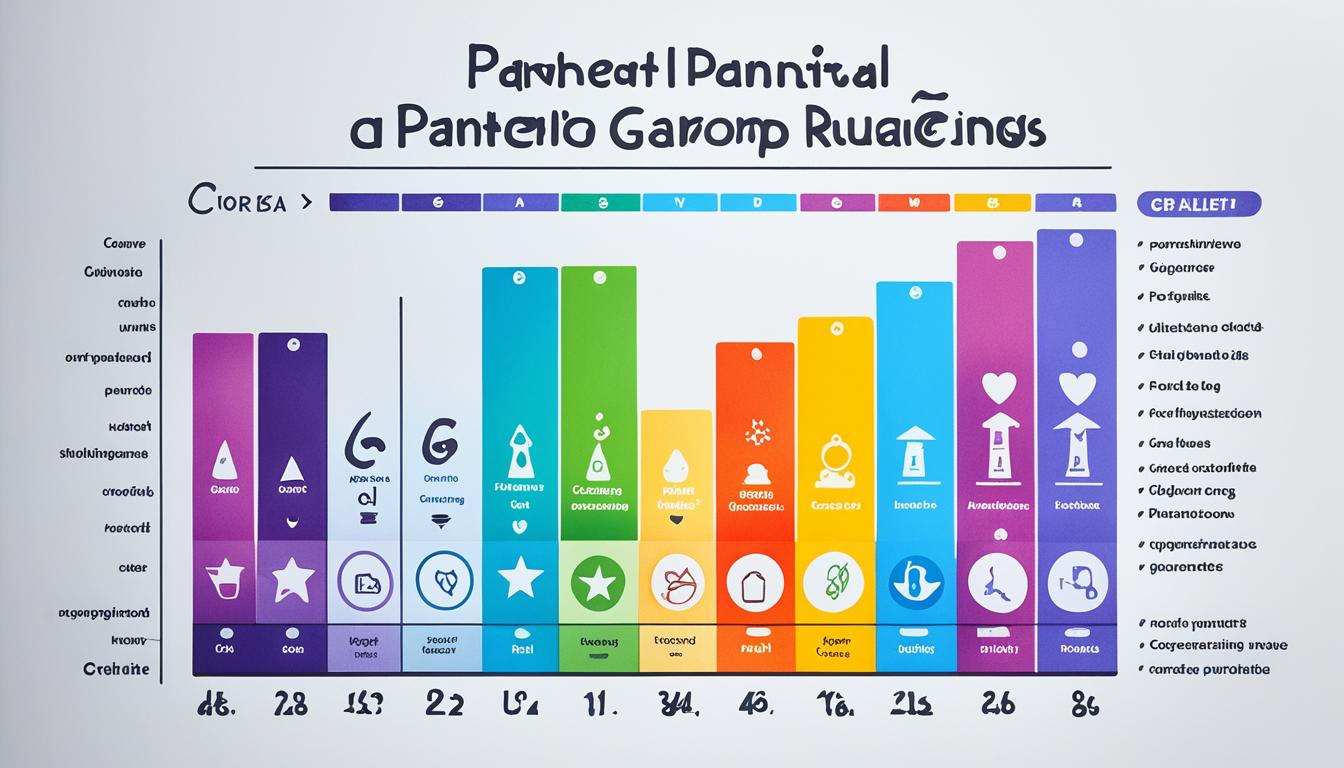Deciphering Parental Guidance Ratings: What They Really Mean
As a parent, I understand the importance of ensuring that the content my children consume is suitable for their age. With the vast array of movies, TV shows, and other forms of media available today, it can be challenging to determine what is appropriate for children. That’s where parental guidance ratings come in.
Parental guidance ratings provide valuable information about the age-appropriateness and potential content concerns of media. These ratings help me make informed choices about what my children can watch and ensure their safety and well-being.
Key Takeaways:
- Parental guidance ratings are essential tools for parents to determine content suitability for their children.
- These ratings indicate the age-appropriateness and potential content concerns of movies, TV shows, and other forms of media.
- Understanding parental guidance ratings allows parents to make informed decisions about what their children can watch.
- By deciphering the meaning behind these ratings, parents can create a safe and enriching viewing experience for their children.
- It is crucial to consider ethical dilemmas surrounding honesty and truth-telling when navigating media consumption.
Understanding Parental Guidance Ratings: Age-appropriateness and Content Concerns
Parental guidance ratings are a valuable resource for parents, providing essential information about the age-appropriateness and content concerns of media for children. These ratings serve as guidelines to assist parents in making informed decisions about what their children can watch. By understanding the meaning behind these ratings, parents can ensure that their children are exposed to age-appropriate content while minimizing potential exposure to inappropriate or disturbing material.
Parental guidance ratings are typically indicated by specific age recommendations, helping parents navigate the vast range of media options available. For example, the rating “G” signifies that the content is suitable for general audiences, while the “PG-13” rating advises parents to exercise caution due to potentially inappropriate content for children under 13 years old.
It is important to note that parental guidance ratings consider various content concerns, including violence, language, sexual content, and thematic elements. These ratings provide a comprehensive overview of potential issues that parents should be aware of before allowing their children to access specific media. By taking these ratings into account, parents can protect their children from exposure to content that may not align with their family’s values or developmental stage.
In the words of renowned media psychologist Dr. Jane Anderson, “Parental guidance ratings serve as a critical tool in helping parents navigate the complex landscape of media. By providing clear information about age-appropriateness and content concerns, these ratings empower parents to make informed decisions that support their child’s emotional well-being and cognitive development.”
Examples of Parental Guidance Ratings:
| Rating | Description |
|---|---|
| G | General audiences. All ages are admitted. Content is suitable for everyone. |
| PG | Parental guidance suggested. Some material may not be suitable for children. Parents are urged to provide “parental guidance.” |
| PG-13 | Parents strongly urged to exercise caution. Some material may be inappropriate for children under 13. |
| R | Restricted. Children under 17 require accompanying parent or adult guardian. |
| NC-17 | No one 17 and under admitted. Content is unsuitable for children. |
Understanding parental guidance ratings allows parents to make thoughtful decisions regarding the media their children consume. By considering the age-appropriateness and content concerns indicated by these ratings, parents can create a safe and enriching viewing experience for their family.

The Impact of Parental Guidance Ratings: Making Informed Decisions for Family Viewing
Understanding the impact of parental guidance ratings is crucial for making informed decisions about family viewing. These ratings provide valuable insight into the age-appropriateness and potential content concerns of media, allowing parents to determine what is suitable for their children. By taking into account these ratings, parents can create a safe and enjoyable viewing experience that aligns with their family values and the developmental needs of their children.
Parental guidance ratings serve as a guide for parents to navigate the vast array of media options available today. Whether it’s movies, TV shows, or online videos, these ratings offer a clear indication of the intended audience and any potential content that may be unsuitable for children. By considering these ratings, parents can make informed decisions and select content that aligns with their desired level of appropriateness and values.
When it comes to family viewing, parental guidance ratings provide an important framework for discussions about media content and its potential impact. By involving children in age-appropriate discussions about these ratings, parents can help them develop critical thinking skills and media literacy. Additionally, parents can use these ratings as a starting point for conversations about sensitive topics or situations depicted in the media, fostering open communication and understanding.
“Parental guidance ratings provide a valuable tool for parents to navigate the content landscape and make informed decisions that prioritize the well-being and development of their children.”
Making informed decisions about family viewing goes beyond relying solely on parental guidance ratings. It also involves considering individual factors such as the child’s maturity level, personal sensitivities, and family values. These additional considerations can further enhance the decision-making process and ensure that the content selected is not only age-appropriate but also aligns with the specific needs and values of the family.
When parents actively engage in the process of selecting and monitoring content based on parental guidance ratings, they not only foster a safe environment for their children but also empower them to make responsible media choices. By providing guidance and setting boundaries, parents can help children develop a healthy relationship with media and cultivate critical thinking skills that will serve them throughout their lives.
In summary, understanding the impact of parental guidance ratings is crucial for making informed decisions about family viewing. By utilizing these ratings as a guide, parents can confidently select age-appropriate and suitable content for their children, fostering a positive and enriching media experience. Remember, parental guidance ratings are just one part of the equation – they provide valuable insight, but personal considerations and open communication with children are equally important for creating a well-rounded approach to family viewing.

Conclusion
Parental guidance ratings are essential tools for parents to make informed decisions about the suitability of content for their children. By understanding the meaning behind these ratings, parents can ensure that their children are exposed to age-appropriate and suitable content, creating a safe and enriching viewing experience.
Considering the implications of parental guidance ratings, including age-appropriateness and content concerns, empowers parents to navigate the complex landscape of media consumption. It allows them to weigh ethical dilemmas, such as honesty and truth-telling, when selecting media for their children.
Deciphering the significance of parental guidance ratings helps in making informed decisions and fostering an environment where children can enjoy media that aligns with their development stage and values. By prioritizing content suitability, parents can create a balanced and positive media experience for their children, promoting healthy growth and engagement.
FAQ
What are parental guidance ratings?
Parental guidance ratings provide information about the age-appropriateness and potential content concerns of movies, TV shows, and other forms of media.
How are parental guidance ratings indicated?
Parental guidance ratings are typically indicated by age recommendations, such as “G” for general audiences or “PG-13” for parents strongly urged to exercise caution due to potentially inappropriate content for children under 13.
Why is it important to understand parental guidance ratings?
Understanding parental guidance ratings is crucial for making informed decisions about family viewing. These ratings provide insight into the age-appropriateness and potential content concerns of media, allowing parents to determine what is suitable for their children.
How do parental guidance ratings help parents?
Parental guidance ratings play a significant role in helping parents make informed decisions about what content is suitable for their children. By deciphering the meaning behind these ratings, parents can ensure that their children are exposed to age-appropriate and suitable content, fostering a safe and enriching viewing experience.






